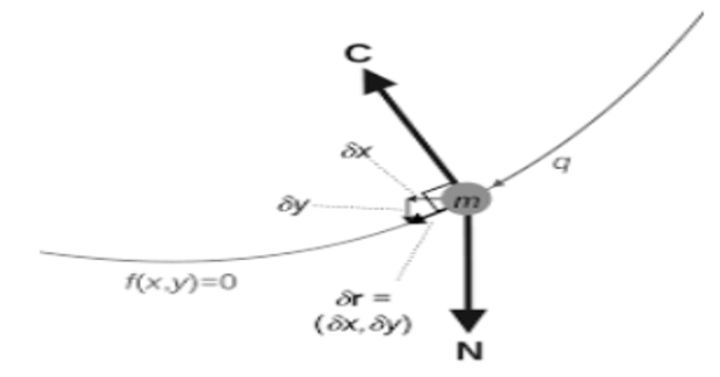- Home/
- GATE MECHANICAL/
- GATE ME/
- Article
Virtual Displacement
By BYJU'S Exam Prep
Updated on: September 25th, 2023

Virtual Displacement is a change in coordinates that occurs instantly. Before going into specifics of the virtual displacement, let’s first understand the displacement. The meaning of displacement is “change in the position of an object.” It has a magnitude and a direction, making it a vector quantity. An arrow pointing from the starting to the finishing point serves as its symbol. For example, if an object moves from A to B, the object’s location changes.
In mechanics, displacement refers to the distance travelled by a particle or body moving in one direction. Generally, point masses are used to describe particles and bodies. This means that, without sacrificing generality, bodies can be thought of as having all their mass concentrated in a single mathematical point. Let’s now look further into the concepts of virtual displacement.
Download Complete SOM/Engg. Mechanics Formula Notes PDF
Download Formulas for GATE Mechanical Engineering-Engineering Mechanics
Table of content
What is Virtual Displacement?
Assume a rigid body is in equilibrium with a system of forces. The work done is 0 if there is no displacement on the body.

Definition of Virtual Displacement
“The body in equilibrium is given an imaginary infinitesimal displacement, referred to as virtual displacement.”
Virtual Displacement Symbol
The virtual displacement symbols for linear motion are x and y, while the virtual displacement sign for angular motion is δ. Virtual work is the resultant work performed by the forces/couples acting on the body in equilibrium due to virtual displacement.
Virtual Displacement Formula
According to the virtual work principle, he total work done by the system of external forces/couple acting on a rigid body in equilibrium is zero for any virtual displacement.
U = F1*δ1+ F2*δ2+ F3*δ3+….. +Fn*δn=0
Formulas for GATE Mechanical Engineering – TOM & Vibrations
Virtual Displacement Principle or Principle of Virtual Work
Total virtual work done by all the forces operating on a system in static equilibrium is zero for a collection of tiny virtual displacements from equilibrium, according to the principle of virtual work. This method was developed in 1717 by John Bernoulli. To understand the concept of virtual work, we must be very clear about what work, virtual work, and virtual displacement are. When an external force moves an object over a distance, at least a fraction of that force must be exerted in the displacement’s direction. In physics, this is known as work.
A virtual force is any system of forces that is in equilibrium. Any displacement that is feasible without breaking any limitations is referred to as a virtual displacement of a system because it may be characterized as an infinitesimal displacement of any mechanical system point that is compatible with the system’s constraints and may or may not happen. In conjunction with this, virtual work is defined as he work accomplished by a real force acting through a virtual displacement or a virtual force acting through a real displacement.
Formulas for GATE Mechanical Engineering – Strength of Materials
Advantages of Principle of Virtual Work Method
Any tiny virtual displacement in configuration space consistent with the constraints takes no work, according to the principle of virtual work. Following are the advantages of the principle of virtual work:
- The systems do not necessarily need to be disassembled to establish connections between the active forces.
- Relationships between the active forces can be discovered directly without considering the reactive forces.
- This approach is beneficial for determining a system’s equilibrium location under known loads.
- One notable benefit of the virtual work principle is that it only needs active forces to determine the system’s mechanics when it experiences a virtual displacement.


